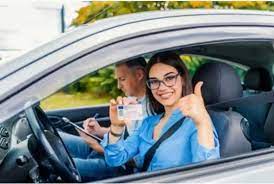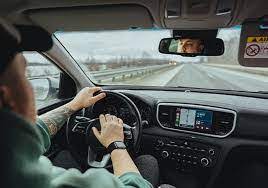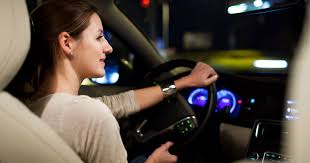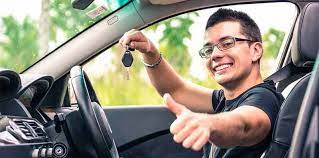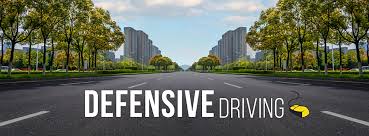What are The Basics of Driving a Car? What is ABC in Car?
Basics of Driving a Car:
Learning to drive a car can seem daunting at first, but with practice and patience, it can become second nature. Here are some basics of driving a car:
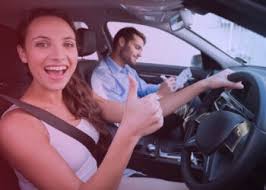
- Familiarize yourself with the car: Before you start driving, it’s important to familiarize yourself with the car’s controls and features. This includes the accelerator, brake, clutch, gearshift, steering wheel, and mirrors.
- Adjust your seat and mirrors: Adjust your seat so you can reach the pedals comfortably, and adjust your mirrors so you can see behind and to the sides of the car.
- Start the car: Insert the key into the ignition and turn it to start the car. If your car has a manual transmission, press the clutch pedal while starting the engine.
- Engage the parking brake: Before you start driving, engage the parking brake to keep the car from moving.
- Release the clutch: If your car has a manual transmission, press the clutch pedal and shift into first gear. Slowly release the clutch pedal while pressing the accelerator pedal to start moving.
- Accelerate and brake: To accelerate, press the accelerator pedal gently and smoothly. To slow down or stop, press the brake pedal gently and gradually. Avoid sudden or harsh movements with the pedals.
- Shift gears: If your car has a manual transmission, shift gears as needed to maintain the appropriate speed. Shift up to a higher gear as you gain speed, and downshift to a lower gear as you slow down.
- Use turn signals: Always use your turn signals when changing lanes or turning. This lets other drivers know your intentions and can help prevent accidents.
- Observe speed limits: Always obey speed limits and adjust your speed based on road conditions. Going too fast can make it difficult to control your car and react to unexpected situations.
- Keep a safe following distance: Leave enough space between your car and the car in front of you to allow for sudden stops or changes in speed.
- Use your mirrors: Check your mirrors frequently to keep track of your surroundings. This will help you avoid accidents and make lane changes safely.
- Park the car: When you’re done driving, park the car in a safe and legal spot. Engage the parking brake and turn off the engine.
- Practice: The more you practice driving, the more comfortable and confident you will become. Find opportunities to practice in different situations, such as in heavy traffic or on the highway.

Remember that driving requires focus, attention, and patience. Always stay alert and aware of your surroundings, and obey traffic laws and signals. With practice and patience, you can become a safe and confident driver.
What is ABC in Car?
ABC in car stands for Accelerator, Brake, and Clutch. These three pedals are found in most cars with manual transmissions and are essential for controlling the speed and movement of the vehicle. Let’s take a closer look at each of these pedals:
- Accelerator: The accelerator pedal is located on the right side of the driver’s footwell and is used to increase the car’s speed. Pressing down on the accelerator pedal opens a valve that allows more air to enter the engine, which in turn increases the amount of fuel delivered to the engine. The more you press down on the accelerator pedal, the faster the car will go.
- Brake: The brake pedal is located on the left side of the driver’s footwell and is used to slow down or stop the car. Pressing down on the brake pedal activates the brake pads, which press against the brake rotors or drums and slow down the wheels. The harder you press down on the brake pedal, the more force is applied to the brakes and the faster the car will slow down or stop.
- Clutch: The clutch pedal is located on the left side of the driver’s footwell and is only found in cars with manual transmissions. The clutch pedal is used to engage and disengage the engine from the wheels, allowing the driver to change gears. Pressing down on the clutch pedal disengages the engine from the wheels, allowing the driver to shift gears smoothly. Releasing the clutch pedal engages the engine with the wheels, allowing the car to move forward.
In cars with automatic transmissions, the clutch pedal is replaced by a torque converter, which performs the same function of engaging and disengaging the engine from the wheels.

It’s important to remember that the ABCs of driving a car require coordination and practice. Smoothly and correctly using the accelerator, brake, and clutch pedals can take some time to master, but with practice, it can become second nature. Additionally, it’s important to pay attention to road conditions, traffic signals, and other drivers to ensure safe and responsible driving.
Basics of Driving a Car:
Learning to drive a car can seem daunting at first, but with practice and patience, it can become second nature. Here are some basics of driving a car:
- Familiarize yourself with the car: Before you start driving, it’s important to familiarize yourself with the car’s controls and features. This includes the accelerator, brake, clutch, gearshift, steering wheel, and mirrors.
- Adjust your seat and mirrors: Adjust your seat so you can reach the pedals comfortably, and adjust your mirrors so you can see behind and to the sides of the car.
- Start the car: Insert the key into the ignition and turn it to start the car. If your car has a manual transmission, press the clutch pedal while starting the engine.
- Engage the parking brake: Before you start driving, engage the parking brake to keep the car from moving.
- Release the clutch: If your car has a manual transmission, press the clutch pedal and shift into first gear. Slowly release the clutch pedal while pressing the accelerator pedal to start moving.
- Accelerate and brake: To accelerate, press the accelerator pedal gently and smoothly. To slow down or stop, press the brake pedal gently and gradually. Avoid sudden or harsh movements with the pedals.
- Shift gears: If your car has a manual transmission, shift gears as needed to maintain the appropriate speed. Shift up to a higher gear as you gain speed, and downshift to a lower gear as you slow down.
- Use turn signals: Always use your turn signals when changing lanes or turning. This lets other drivers know your intentions and can help prevent accidents.
- Observe speed limits: Always obey speed limits and adjust your speed based on road conditions. Going too fast can make it difficult to control your car and react to unexpected situations.
- Keep a safe following distance: Leave enough space between your car and the car in front of you to allow for sudden stops or changes in speed.
- Use your mirrors: Check your mirrors frequently to keep track of your surroundings. This will help you avoid accidents and make lane changes safely.
- Park the car: When you’re done driving, park the car in a safe and legal spot. Engage the parking brake and turn off the engine.
- Practice: The more you practice driving, the more comfortable and confident you will become. Find opportunities to practice in different situations, such as in heavy traffic or on the highway.

Remember that driving requires focus, attention, and patience. Always stay alert and aware of your surroundings, and obey traffic laws and signals. With practice and patience, you can become a safe and confident driver.
What is ABC in Car?
ABC in car stands for Accelerator, Brake, and Clutch. These three pedals are found in most cars with manual transmissions and are essential for controlling the speed and movement of the vehicle. Let’s take a closer look at each of these pedals:
- Accelerator: The accelerator pedal is located on the right side of the driver’s footwell and is used to increase the car’s speed. Pressing down on the accelerator pedal opens a valve that allows more air to enter the engine, which in turn increases the amount of fuel delivered to the engine. The more you press down on the accelerator pedal, the faster the car will go.
- Brake: The brake pedal is located on the left side of the driver’s footwell and is used to slow down or stop the car. Pressing down on the brake pedal activates the brake pads, which press against the brake rotors or drums and slow down the wheels. The harder you press down on the brake pedal, the more force is applied to the brakes and the faster the car will slow down or stop.
- Clutch: The clutch pedal is located on the left side of the driver’s footwell and is only found in cars with manual transmissions. The clutch pedal is used to engage and disengage the engine from the wheels, allowing the driver to change gears. Pressing down on the clutch pedal disengages the engine from the wheels, allowing the driver to shift gears smoothly. Releasing the clutch pedal engages the engine with the wheels, allowing the car to move forward.
In cars with automatic transmissions, the clutch pedal is replaced by a torque converter, which performs the same function of engaging and disengaging the engine from the wheels.

It’s important to remember that the ABCs of driving a car require coordination and practice. Smoothly and correctly using the accelerator, brake, and clutch pedals can take some time to master, but with practice, it can become second nature. Additionally, it’s important to pay attention to road conditions, traffic signals, and other drivers to ensure safe and responsible driving.

